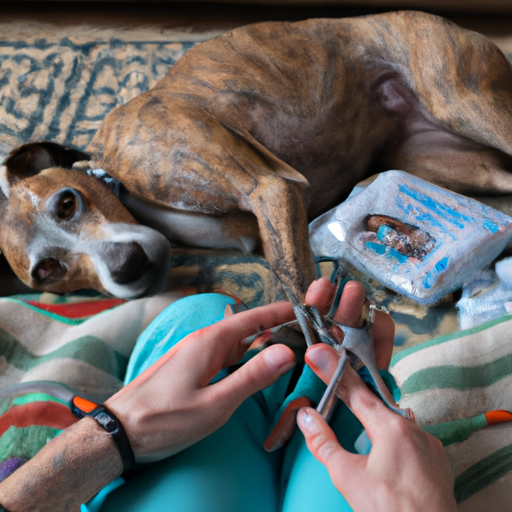Introduction
As a dedicated caregiver, you know that caring for your furry friend involves more than just feeding and playing with them. One crucial aspect often overlooked is nail care. If left untrimmed, a dog’s nails can grow too long, causing discomfort, pain, and even health issues.
Why Trimming Your Dog’s Nails is Important
Untrimmed nails can cause a variety of problems for your dog. They can become ingrown, causing severe pain and possibly leading to an infection. Long nails can also affect your dog’s posture and walking ability, leading to joint problems later in life. Moreover, they can scratch your floors or accidentally hurt you or others.
Preparing to Trim Your Dog’s Nails
Before you begin, gather all necessary tools:
- Dog nail clippers or grinder
- Styptic powder (stops bleeding in case of accidents)
- Treats (for rewarding your dog)
Remember, the key to a successful nail-trimming session is patience and positivity. Make sure you and your dog are both calm and relaxed before starting.
| Equipment | Use |
|---|---|
| Nail Clippers | To cut the nails |
| Styptic Powder | To stop bleeding if you cut too short |
| Treats | To reward your dog after each nail |
How to Trim Your Dog’s Nails
Here’s a step-by-step guide:
- Hold your dog’s paw gently but firmly: Make sure your dog is comfortable. Don’t squeeze the paw too hard.
- Identify the quick: The quick is the sensitive part of the nail that contains blood vessels. In clear nails, it’s the pink part. In darker nails, it may be harder to see.
- Trim the nail: Using the clippers, cut the nail at a 45-degree angle. Be careful not to cut into the quick as it can cause pain and bleeding.
- Give your dog a treat: After each nail, reward your dog with a treat. This can help make the process less stressful for them.
Dealing with Accidental Bleeding
Even with the utmost care, accidents can happen. If you cut into the quick, don’t panic.
- First, reassure your dog and keep them calm.
- Then, apply the styptic powder to stop the bleeding.
FAQs
Q: How often should I trim my dog’s nails?
A: It varies depending on how active your dog is and the surfaces they walk on. Generally, once a month is a good rule of thumb.
Q: What if my dog is too scared to have their nails trimmed?
A: You may need to desensitize them to the process. This involves gradually getting them used to having their paws touched and the sound of the clippers.
Q: Can I use human nail clippers?
A: No, human clippers aren’t designed for dog nails and can cause splitting or cracking.
Q: What if I can’t see the quick because my dog’s nails are dark?
A: Cut a little bit at a time. If you see a dark spot in the middle of the nail, that’s likely the quick, so stop there.
Remember, as a loving caregiver, your dog’s comfort and health are your top priorities. By learning to trim their nails properly, you’re helping to ensure they stay happy and healthy.



